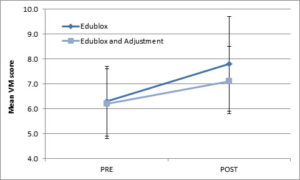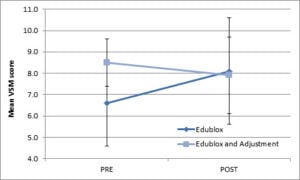 In a research study, chiropractor Dr. Jaidan Mays compared the effects of Edublox training versus Edublox training combined with cervical spinal manipulative therapy on visual memory and visual sequential memory.
In a research study, chiropractor Dr. Jaidan Mays compared the effects of Edublox training versus Edublox training combined with cervical spinal manipulative therapy on visual memory and visual sequential memory.
Mays hypothesized that cervical adjustment therapy results in augmented cerebral blood flow, positively impacting cognitive brain functions.
Thirty-four Grade 5, 6, and 7 students from an inner city school participated in Mays’s study. Two sub-tests of the Test of Visual Perceptual Skills were used to assess the students’ visual memory and visual sequential memory. They were then divided into two equal groups and trained by an Edublox tutor for 22.5 hours for five days. A holistic Edublox program was followed, which included auditory and reading exercises. The Edublox and Adjustment Group also received cervical adjustment therapy every morning. The Visual Perceptual Skills assessment was repeated after five days.
The results: The mean Visual Memory Skills Test POST score across both groups was significantly higher than the mean Visual Memory Skills Test PRE score. The mean score across both groups improved from 6.2 to 7.5 years (i.e., 1.3 years after 22.5 hours of training). The Edublox Group improved slightly more than the Edublox and Adjustment Group (from 6.3 to 7.8 years versus from 6.2 to 7.1 years):
.

.
The mean Visual Sequential Memory score of the Edublox Group improved by 1.5 years (from 6.6 to 8.1 years); the mean score of the Edublox and Adjustment Group decreased by 0.6 years (from 8.5 to 7.9 years).
.

.
These results do not confirm the theory. Instead, the research suggests that the opposing view may be correct, i.e., cervical adjustment therapy results in lower cerebral blood flow, negatively impacting cognitive brain functions. These results mentioned above, however, confirm the power of Edublox programs to improve visual memory and change the lives of children for the better.

